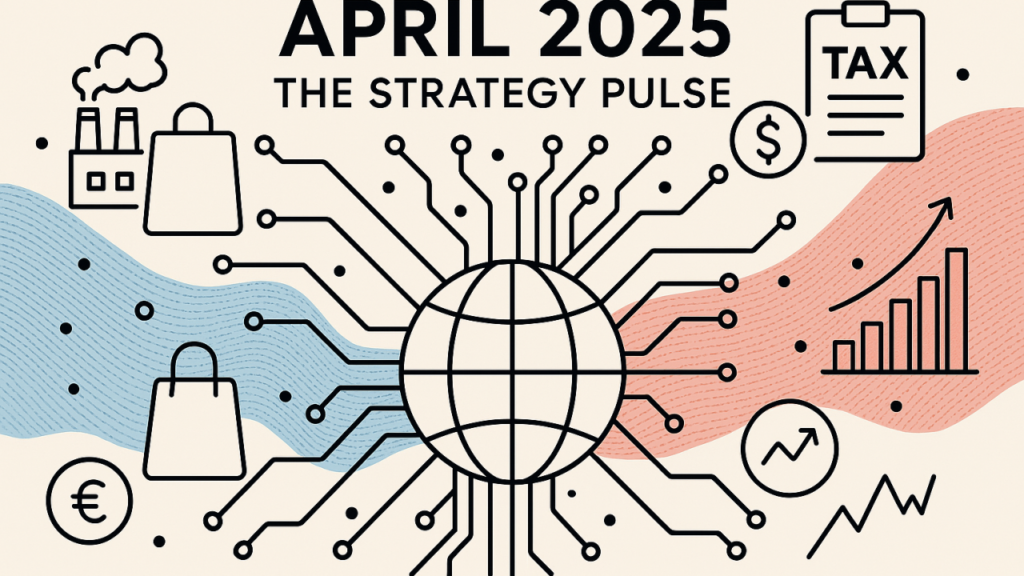Category: Useful Resources

TMI: is LinkedIn getting too personal?
TMI: is LinkedIn getting too personal?
May 10, 2022

Once upon a time, LinkedIn was a no-frills networking tool. Nothing more, nothing less. It served its purpose as a professional platform, but the website had little to no scope for creativity or individuality. It lacked pizzazz.
Fast-forward to today. LinkedIn has undergone a metamorphosis since its conception in 2002, blossoming from a caterpillar into a butterfly. Microsoft bought LinkedIn in 2016 for $26.2 billion, breathing new life into the outdated platform with a plethora of snazzy new features. Users now have the opportunity to upload videos, pictures, presentations, articles…you name it. The once old-fashioned and dull networking site has been given a facelift, evolving into a platform that invites its users to produce dynamic, engaging and personal content for their connections and followers to enjoy and interact with. The website welcomes 200 new users every minute, with Gen Z making up a large fraction of those joining the professional platform.
But has it gone too far? On LinkedIn, the boundary between our personal and professional lives has been broken down, as more and more users are opting to be more vulnerable and authentic with their connections, building intimate relationships with their professional network.
This begs the question: what differentiates LinkedIn nowadays from the likes of TikTok and Facebook? Has LinkedIn become a breeding ground for cringey memes, attention-grabbing GIFs, and unprofessional oversharing? Is it oversaturated with ‘influencers’ desperately trying to cultivate a personal brand, and companies spamming their audience with irrelevant content in a bid to get their product seen and heard? Some may argue that the platform has shapeshifted into a carbon copy of every other social networking site out there, out of touch with its original purpose of connecting professionals online.
Alternatively, is LinkedIn’s evolution a positive thing for the world of work? Has it injected some much-needed authenticity and warmth into an otherwise cold and clinical corporate culture?
People buy from people
When it comes down to it, there’s an unwritten formula to creating a LinkedIn profile. A profile picture and a bio are the bread and butter of any LinkedIn profile; providing a brief overview of who you are and what you bring to the table is the bare minimum nowadays. A profile without these features is as useless as a car without an engine – you may as well not bother. It’s crucial that you humanise your profile, as this is what appeals to other users. People are drawn to personality, even on a professional platform like LinkedIn.

Signing onto LinkedIn, I know what awaits me before the homepage has fully loaded. I’m routinely inundated with an abundance of smiley selfies, dog pictures, and videos of blissful morning walks. Upon first glance, one could easily think that they’ve mistakenly stumbled upon their Facebook or Instagram feed, but no. This is the landscape of LinkedIn nowadays. People are not afraid to share a more personal, human and creative side to themselves on this platform. The boundaries between the professional and the personal are blurred.
This trend for authenticity became much more explicit during the pandemic, when personal stories garnered significant traction from the LinkedIn community. At the height of the pandemic, people across the world were sharing their stories of grief, loss, success, mental health struggles, business difficulties, and more. And many of these stories would go viral, receiving thousands of likes, comments, and shares.
This trend has persisted, and it’s now the norm for people to share a more vulnerable side of themselves to prospective customers and employers. LinkedIn provides a golden opportunity for personal storytelling. Sharing the highs and lows of your professional journey; the ups and downs of your daily routine; the trials and tribulations of your netball team; the characters you encounter in your volunteering. Someone out there wants to hear about it all.
We’re witnessing a sea change in the way people behave in a professional context. People are showing up on LinkedIn as the most real and authentic version of themselves. Whether it’s sharing mental health struggles or lifechanging moments, people are choosing to demonstrate that they bring more to the table than experience and a skillset: they bring their own unique personality.
And frankly, personality sells. Brands such as Rare Beauty are the gold standard of how personality can be applied to LinkedIn in an impactful and inspirational way, by companies as well as individuals. The brand provides a platform for employees to speak up on issues that matter to them, allowing them to share their personal stories. It is currently Asian American and Pacific Islander Heritage Month, and Rare Beauty‘s social team posted an account by Grace Lim, their Senior Director of Brand & Product Marketing, describing her experience as a woman of Asian descent in corporate America. As it’s also Mental Health Awareness Month, Rare Beauty have partnered with the organisation Mental Health First Aid in order to provide their followers with resources about the power of words in destigmatising mental health issues. Rare Beauty builds trust with their audience, using LinkedIn to post engaging content that – though not always directly related to the product they are selling – aligns very well with their brand values and messaging. As a brand that celebrates what makes us unique and denounces conforming to conventional, unattainable beauty standards, Rare Beauty has hit the nail on its head with its LinkedIn marketing.
In order to stand out from the crowd against a sea of other users, companies and individuals alike need to make their presence known on LinkedIn by maintaining a golden thread of personality.
Taking it too far
However, that’s not to say that we should be shamelessly baring all on LinkedIn. There is such a thing as taking it too far.
Posting regular content about your life on LinkedIn risks teetering on the verge of caricature. As of late, LinkedIn has become a hotbed of people proactively trying to become ‘influencers’ on the platform, posting personal content with the sole aim of garnering a large following. There tends to be something quite Kardashian-esque about this type of content; users will post daily pouting selfies or topless gym mirror pictures with a caption preaching the importance of #worklifebalance, or a photo album from their holiday in Spain. Ironically, there’s something quite fake and artificial about this attempt at authenticity. Spamming your audience with superficial content can be a bit transparent, and might not go down as well with your professional network as you may have envisioned.
Everyone is trying to build a personal brand, so much so that there’s even a market for ‘LinkedIn coaches’ who claim to instruct you on how to methodically build a following on the platform.

Furthermore, if you choose to post personal content on LinkedIn, it’s crucial that you know where to draw the line. Oversharing on the platform is rampant. It’s best to steer clear of discussing controversial topics, no matter how ‘trending’ they may be. Taking a strong stance on a sticky subject could potentially polarise your audience and land you in deep water. You need to remain mindful of this.
Our opinions can get us into trouble. Although it’s important to allow your personality to shine through on LinkedIn, beware the overshare. You don’t want to go viral for the wrong reasons. We’ve all witnessed the train wreck of disgruntled employees ranting about their negative experiences with a particular employer. No matter how true your account may be, any potential employer coming across this content will be left with a bad taste in their mouth. It won’t sit well with prospective employers that you’re badmouthing your former boss so vocally on a professional platform; keep the complaints to Glassdoor. When it comes to LinkedIn, always rein in your opinions, so that you can strike the perfect balance between personality and professionalism.
Often, the stories that go viral on LinkedIn tend to follow a very similar blueprint. Powerful people such as CEOs and founders look back on their professional journey, candidly opening up about their failures and mistakes, and explaining how they came from having nothing to ultimately being the posterchild for success. There’s something slightly cringe-inducing about the redemptive formula these stories all seem to follow. When someone with prestige talks about their failures, it’s inspiration, because they’re telling this story from a position of power. But if someone with zero status were to follow suit and copy this recipe for a viral LinkedIn post, it would most likely fall on deaf ears. Talking about your mistakes and failures is only trendy as long as it’s proceeded by the inevitable outcome of glittering success. Whilst these types of posts may be inspiring to some, to others they can be downright demotivating. Being bombarded with success stories can be overwhelming when you’re simply trying to stay afloat.
So, should you bare all on LinkedIn?
Ultimately, showing personality on LinkedIn is a positive, so long as it’s done tactfully. Opening up about mental health issues, sharing lifechanging events that have shifted your mindset, or providing your followers with insights into your personal journey is all well and good. However, the key is ensuring that you don’t go overboard. All content should somehow circle back and relate to your professional life. If you enjoy going to the gym as it helps you unwind after a stressful day at work, feel free to share this with your followers, by all means. But strike a balance between personal and professional content; LinkedIn is not Instagram, and we shouldn’t treat it as such. Think twice the next time you whip out your phone and flex your muscles in preparation for a post-workout mirror selfie.

Feeling snowed under? Here are four ways to deal with work-induced stress
Feeling snowed under? Here are four ways to deal with work-induced stress
April 26, 2022

The long-awaited weekend. Pure, unadulterated joy washes over you as you wake up on Friday morning, safe in the knowledge that in approximately T-12 hours, you’ll be liberated from the chains of the daily grind for 48 sweet hours. For many of us, the weekend shines forth brightly as the light at the end of the tunnel, each and every working week.
And when the weekend inevitably draws to a close, ushering in a new week of work-induced stress, you’re jolted back into reality, out of your dream-like state. It can feel like being swept up from serenely smooth waters and hit by a ferocious tidal wave. It’s a rude awakening that you can never truly feel prepared for. In the blink of an eye, the weekend is snatched away, and the cycle begins all over again.
When Monday morning rolls around, you tentatively open up your work laptop, peeping fearfully through your fingers as you glance at the screen, like a character in a horror movie. You’re hit with an influx of work emails and urgent inquiries. And just like that, you’re snapped out of your period of rest and relaxation, and the cogs of the daily grind creakily begin to turn again.
But it shouldn’t have to be like this. You shouldn’t have to go to bed every Sunday night with butterflies in your tummy, or wake up on a Monday dreading the week stretched out in front of you. You shouldn’t be so stressed out by work that you’re trapped in a cycle of counting down the days until the weekend can offer you some respite.
Don’t get me wrong – stress is a natural response to workplace pressure, and can actually be a force for good. It can light a fire under you and fuel you to work hard. But it’s crucial to manage stress so that it doesn’t get out of hand; when you’re excessively stressed out, this can lead to burnout and cause your productivity and motivation to dramatically plummet. And it can have a serious impact on your mental and physical health.
Incorporate stress management techniques into your daily routine to ensure that you don’t suffocate under the weight of uncurbed stress. As Stress Awareness Month draws to a close, what better time to explore some methods of coping with work-related stress?
Make time for yourself
Making time for yourself during the working week can seem like a Herculean task – unrealistic and unachievable. You may feel as though there simply aren’t enough hours in the day, unless you were to wake up promptly at the crack of dawn, light some incense, perform an early morning yoga sequence, prepare a green juice and meditate all before your 8:30am meeting.

In reality, however, making time for yourself doesn’t have to look like this. Simply carve out a period of time each day, whether that be ten minutes or two hours, dedicated entirely to something you enjoy doing. Block out a set amount of time to do something for yourself, for no other purpose than pure enjoyment: read that book that your friends have been recommending for as long as you can remember, go for an evening stroll, follow that recipe you’ve been keen to try, fit in ten minutes of exercise.
Whatever your self-care rituals may look like, make sure that they work for you. Wellness is not one-size-fits-all. You don’t have to sign up for expensive Pilates classes or put yourself through gruelling, Augean F45 or 1Rebel circuits in order to incorporate fitness into your weekly routine. A quick search on YouTube will unveil millions of ten-minute workouts that you can comfortably fit in around your schedule, no matter how hectic it may be.
Cultivate daily habits that you can look forward to throughout your day. It can be something small, like the ritual of making your morning coffee, or doing a five-minute stretch in the evening to unwind after sitting rigidly at your desk all day. ‘Me time’ is a tried-and-tested stress management tool.
Plan ahead
There’s no worse feeling than hazily falling out of bed in the morning, plonking yourself at your desk at 8am and realising that you have a growing mountain of work in front of you and absolutely no idea where to start.
Having to face off against this imposing tower of work can easily make you feel overwhelmed and overburdened. In order to tackle this feeling, use the start of your morning to plan ahead, scheduling and mapping out your day, allocating the necessary time and energy to each task.
This is a small but mighty stress management technique. Simple as it may seem, it’s a sure-fire way to limit excessive work-related stress. When your brain feels like a jumbled-up jigsaw puzzle – thousands of tiny, fragmented pieces in a mixed-up mess – you can put all the pieces of the puzzle together by creating a clear and organised schedule at the beginning of each work day. By compartmentalising your day, designating a specified amount of time to your different tasks and responsibilities, you’re breaking down your work into bitesize chunks. You can lay things out, approaching each task in turn, as opposed to drowning under a mass of work.

There’s something undeniably therapeutic about the act of ticking tasks off your daily planner. It’s a concrete way of signalling to your brain that you’re being productive, and getting things done in an organised and measured way.
Shut off and take a breather
Setting boundaries is important.
You may be keen to impress a new boss, or take on some extra work to help a co-worker out. But working non-stop into the early hours of the morning is never the answer. Overexerting yourself is a guaranteed way to end up burnt-out and stressed out. If you’re using your phone at maximum brightness, flicking between 20 different apps at a time, non-stop, without charging it, it’s inevitably going to run out pretty quickly. Sometimes, you need to operate in battery-saver mode, or give yourself an opportunity to recharge.
Recognise when it’s time to walk away from your work, to shut off and take a well-deserved breather. There’s no shame in closing your laptop screen down if you feel like you need a break. Obviously, within reason: don’t skive off of work at the first opportunity. But if you’re working hard and in need of some respite, take the time to go for a walk and reset. This can actually be highly beneficial for the quality of your work; when you come back to the task at hand, refreshed and revitalised, you can look at your work through a fresh pair of eyes. It can give you some perspective, ensuring that you don’t get bogged down in a bottomless pit of work.
And let’s not forget the ultimate key to coping with stress: getting a good night’s sleep. Never underestimate the power of a solid night of sleep; sleeping well is required to ensure that you function at full capacity during the work day, and a proper night’s sleep can alleviate stress.

All-nighters were the bane of my university life. The feeling is etched into my brain – leaving an essay to the last minute, powering through it at 4am, fuelled by nothing but Red Bulls and the fast-approaching deadline. The bags forming under my eyes would grow more visible as the sun gradually rose, and my hands, shaking with the adrenaline of the Red Bull coursing through my veins, would go to click send, beads of sweat dripping down my face. I’ve made a vow to myself to keep all-nighters firmly in the past, and it shouldn’t be something you feel the need to resort to in your working life either.
Steer clear of unhealthy coping mechanisms
When it comes to dealing with stress, there definitely is a right and a wrong way to go about it. And when you let stress bubble away on a high heat for an extended period of time, it eventually spills over into unhealthy territory.
When you don’t have healthy coping mechanisms in place, you risk falling into unhealthy habits as a means of dealing with stress. Whether it be drinking too much alcohol, smoking, developing unhealthy eating habits or avoiding responsibilities.
These coping mechanisms may seem harmless, or like a form of escapism in the short-term, but long-term they can be deeply detrimental to your health. Weed out the cause of stress at its root, rather than addressing the symptoms in a dangerous way.

It’s not you, it’s me: the worrying trend of professional ghosting
It’s not you, it’s me: the worrying trend of professional ghosting
April 12, 2022

Your phone buzzes. You instantly scramble to seize hold of it, and anxiously peer at the lit-up screen.
False alarm. Dejected, you fling your phone across the room and stare blankly at the ceiling.
Expecting a message from your current romantic interest, you’re instead greeted by a notification from the news app informing you of some breaking news, or your FitBit tauntingly reminding you that you’ve walked just 59 steps today out of your 10,000 daily target.
The message you spent ages composing – as you mulled over whether to put an ‘x’ at the end of the sentence, or whether to express your amusement with a ‘lol’ or a ‘haha’ – has garnered no response whatsoever. The two ticks, indicating that your message has been delivered, stand out mockingly on the screen. As you go to check their ‘last seen’ on Whatsapp, you realise that they were online two minutes ago. You sent that text two hours ago.
All the signs seem to point directly towards a singular conclusion: you’re being ghosted.
For anyone lucky enough to be unfamiliar with the term, ghosting is a modern phenomenon that plagues the world of online dating. Ghosting basically entails cutting off contact with someone out of the blue, with no apparent reason or forewarning. In the modern dating world, relationships tend to follow a pretty similar trajectory: your date may ghost you, before submarining into your life again by sliding into your DMs just in time for cuffing season, love bombing you into a situationship.
Confused? Us too. Navigating the world of online dating is a minefield, and attempting to decipher all the jargon of modern romance is like trying to crack the Da Vinci code.
Ghosting is a phenomenon that many of us have experienced in some capacity. According to research by Elle magazine, 50% of men and women alike have either ghosted someone or been the victim of ghosting themselves. The guilty party always uses ghosting as a way of avoiding the awkward ‘it’s not you, it’s me’ conversation.
And it always follows the same blueprint. You spend time carefully curating a Tinder or Hinge profile, tentatively match with someone, experience the ecstasy of a whirlwind romance, only then to come crashing down from your high when you’re suddenly met with radio silence.
For those of you who have thus far managed to steer clear of the world of online dating: if you think you’ve escaped the ghosting phenomenon, think again. Ghosting is beginning to permeate every facet of modern life, and no one is safe.
Ghosting from the applicant perspective
Searching for employment in the current job market is hard enough as it is. Every company out there expects nothing short of perfection from you. Employers all seem to demand that you tailor your CV and cover letter entirely around why you would like to work specifically at their company. They basically expect you to write a romantic ballad dedicated to them, expressing your passion for the company, and describing how it’s been your ambition to work there since childhood, from the moment you learnt to talk.
So then, when they don’t even provide you with the bare minimum of an automated response, it’s easy to see how the job search can become a gruelling and demotivating experience from the applicant perspective. Unfortunately, a growing number of employers simply ghost applicants who apply for roles with them.

Upon graduating six months ago, I went on a tireless hunt for a job. I became pretty much immune to the automated response system telling me that my application had been unsuccessful; it became part and parcel of the job search. In one particular instance, I applied for a role, finely tuning my CV and cover letter, only to be told within 30 seconds of submitting my application that, ‘after careful consideration’, I had been rejected. Yep, you heard that right. 30 seconds.
Believe it or not, this was actually one of the more positive experiences I had whilst searching for an entry-level graduate job. At least this particular company wasn’t afraid to let me know the ugly truth, even if it was just an automated response robot who was breaking the news to me.
Fact is, like many graduates, I’ve been ignored by more companies than I can count. No automated response, no nothing.
And it’s not just in the early stages that applicants get ghosted. You could be on the verge of receiving an offer, only to be left in the lurch by your recruiter or the hiring manager of the company at the very last minute. According to a survey by the #EndGhosting campaign, 65% of the British public have been ghosted suddenly in the middle of the hiring process.
When you’ve invested so much time and energy into something only to come back empty-handed, it’s easy to feel like your efforts are futile. But it’s important not to let it wear you down – Tinder is full of players and time wasters, but it’s inevitable that you’ll one day come across a diamond in this sea of coal. And in just the same way, if you keep pushing on, you’re sure to find a job that’s a perfect fit for you. If you do get ghosted by prospective employers, keep your head up, and remember that, as is the case with that Tinder match, it’s them and not you.
Ghosting from the hiring manager / recruiter perspective
Ghosting can be just as frustrating when the tables are turned, and the applicant is the guilty party.
If you’re a recruiter, you no doubt know what it’s like to have put a great deal of time and energy into guiding a candidate through the hiring process, only then to ultimately never hear back from them. You confidently present them with a great offer they surely cannot refuse – the light at the end of the tunnel – and then…nothing. Absolutely zilch. You feel like a priest stood at the altar, by the groom’s side, waiting excitedly to officiate a marriage. You’ve learnt the speech off by heart, and the aisles are packed with guests, only for you to find out that the bride has jilted her beloved at the very last minute. Your matchmaking efforts have fallen short, the celebrations are called off, and all you’re left with is the awkward aftermath of this failed union.
When a candidate ghosts their recruiter or the hiring manager of a company, it can be frustrating for all parties who have invested a lot of time and energy in the hiring process.

That’s not to say that candidates are obligated to respond to every recruiter who slides into their DMs with a job offer that doesn’t tickle their fancy. You cannot be expected to respond to every LinkedIn message, just like you’re not expected to respond to the influx of spammy or inappropriate messages that tend to flood the Tinder inbox.
However, when you’ve built a relationship with a recruiter or hiring manager over an extended period of time, it’s common courtesy to let them know where you stand, even if you lose interest in the role over time.
Ignoring recruiters and hiring managers in the middle of the hiring process, leaving them high and dry, risks damaging your professional reputation. In the long-term, you could potentially be burning bridges, which you may come to regret in the future. It’s always a good idea to maintain contact with the people supporting you on your job search, even if it is to let them down. Your future self may thank you for it, as they’ll be more open to working with you again should you so wish.
Ghosting may seem like the easy way out in the short-term; a way to avoid an awkward conversation. But it’s not as harmless as you may think: it can damage your professional reputation in the long-run.
The fact is, letting someone down gently is far more respectful and painless than ghosting. It provides both parties involved with some much-needed closure. The same rules apply in the dating and professional spheres: imagine the person on the other end of the screen, and treat them how you want to be treated. It would no doubt solve a lot of problems and prevent a lot of heartache if we all communicated a little more honestly with each other.

The perils of accepting a counteroffer
The perils of accepting a counteroffer
March 30, 2022

The dreaded moment has come. It’s time to break the news to your boss: you’re moving on and pursuing another opportunity at a different company.
But then, a spanner in the works. You’re struck by an unexpected turn of events when, in a bid to keep you onboard, your boss responds with a counteroffer.
Naturally, you’re flattered. They must really value me, you think to yourself. They’re pulling out all the stops just because they can’t bear the thought of losing me.
Whilst this is definitely plausible, it’s important to remain vigilant when presented with a counteroffer. There is, of course, a chance that your employer will go out of their way to address your key concerns in order to keep you at the company, but this isn’t always the case.
Sometimes a counteroffer isn’t all it’s cracked up to be. Your company could be trying to keep you for the wrong reasons, and it’s all too common for the main component of a counteroffer to be a higher salary.
We’d be lying if we said that a pay rise isn’t an alluring prospect. It’s a shiny offering that your employer can dangle in front of you to seduce you to stay with them. As bewitching as it may be in the short-term, in many cases, the magic wears off quite quickly, and reality kicks in.
There are a number of reasons you should be sceptical about accepting a counteroffer, and we’ll be exploring a few of them.
Compromising on your needs
When you’re presented with the attractive offer of a pay rise, it can be hard to say no. It’s a quick-fix, but one that you might regret accepting in the long-term.
Before you made that initial decision to pursue career opportunities elsewhere, I’d bet you had stacked up a list of some pretty compelling reasons for leaving in the first place. You weighed them up in your mind, and determined that they were hefty enough justifications for making the decision to move on to a new role.
Occasionally, employers may address some of these core issues when presenting their employee with a counteroffer. But more often than not, a higher salary is the main sell of a counteroffer, and a higher salary does not make that towering pile of other problems and pain points vanish into thin air.

Deep down, you were driven by a subconscious urge to leave this job, and that urge will continue to linger so long as these other pain points go unaddressed. Whether it be the company culture, the lack of progression or the work itself; a combination of factors played into your decision to explore roles at other companies in the first place, and it’s unlikely that a counteroffer will be able to tackle all of the root causes of your dissatisfaction.
Ask yourself this: do you really see yourself at this company in the long-term? Or have you been won over by a salary increase to stay in a role that doesn’t align with your own personal values and goals?
The stats speak for themselves. Data shows that 50% of people who accept a counteroffer leave within 12 months of having done so. When asked about the impact of accepting a counteroffer, nearly 40% of a group of senior executives and HR leaders believed that doing so would ultimately negatively affect one’s career.
Money is the number one concern for just 12% of people who leave their jobs in pursuit of other opportunities, despite 89% of employers being convinced that a higher salary is the main motivator for their employees leaving. For the vast majority of us, a counteroffer based almost exclusively on an attractive pay rise is an unsustainable and unwise choice in the long run.
They may not think as highly of you as you think
As flattering and alluring as a counteroffer may initially seem, it’s important to remain aware of the reasons you’re being presented with that counteroffer in the first place. The reality may be that your employer realises that the cost of replacing you far outweighs the cost of keeping you by offering you a pay increase. They’re more than aware of the expense that comes with hiring someone new. Advertising a job, enlisting the help of recruiters, onboarding and training a new employee; it’s easy to see why your company would rather avoid the hassle and keep you around instead.
Don’t get us wrong – there’s always the chance that your company truly values you as an employee and doesn’t want to lose you, so they pull out all the stops to keep you and address all of your core concerns. But chances are, they’re trying to win you over for practicality and convenience’s sake.
Given the current candidate-short climate, it’s no surprise that employers are so reluctant to lose their grip on good quality employees. They don’t want to be left searching for high quality candidates in a market where they odds are stacked against them from the get-go.

Simply put, your absence would cause more disruption than your current employer is willing to go through. And though it may sound like tough love to put it so bluntly, they’d rather keep you because it’s far more convenient for them to do so.
Think of it this way. Your employer had the resources to pay you more and address your concerns before you stated your intention to leave, and yet they consciously chose not to. It was only when you presented them with the impetus of resigning that they decided to take your pain points seriously. Do they really value you if they didn’t tackle your core concerns until confronted with the reality that you planned to leave?
Incurring trust issues
Unfortunately, no matter how strong a relationship you managed to cultivate with your employer beforehand, your decision to seriously consider a new opportunity elsewhere is bound to impact the dynamic between you. Whether it be subtle or more overt, your boss will likely begin to question your loyalty. Regardless of how valid your reasons for leaving may have been, once you accept that counteroffer, your trust record at your company will be tainted.
This undoubtedly sets a dangerous precedent for your long-term future at the company. When the time comes for redundancies or pay cuts to be made, will you be first in line to face the axe? Though you ultimately opted to stay on, your loyalty will no doubt be questioned, and this could mean that your security in the role hangs in the balance. Your employer may subconsciously still have your near-resignation in mind when faced with such tough decisions. Indeed, many people say that they feel isolated within their organisation after having accepted their counteroffer and staying on in the role.

When posed with some potential downsides to accepting a counteroffer, 80% of senior executives and 60% of HR leaders came to the conclusion that a major con was the impact it would have on trust and reputation at the company.
Evidently, accepting a counteroffer isn’t always what it’s cracked up to be. There are worse positions to be in than having two opposing offers dangled in front of you; you may feel like a kid in a sweet shop, confronted with the impossible choice between strawberry laces and gummy worms. When you’re at this difficult crossroads, it can be hard to make a snap decision that’ll be best for you in the long-term. Use your powers of discernment to choose the right path, keeping in mind the points made here when making your decision. Listen to your gut, and don’t let yourself be short-changed.

On the absence of women in the data sector
On the absence of women in the data sector
March 12, 2022

We’re likely all aware that men disproportionately outnumber women in the data field. Women constitute just 26% of the global data and AI workforce; there is only one female data analyst or scientist for every four of her male counterparts. This is a worrying statistic, considering the significant role that data plays in our lives. In order to avoid bias in data models, society needs to collectively pave the way for more women to enter the data sector. As International Women’s Day is now upon us, let’s seize the opportunity to address some of the factors contributing to this issue, and examine some potential ways of overcoming it.
The stigma of STEM subjects
A lack of women pursuing careers in data and analytics is a symptom of a broader societal problem. As it stands, women constitute just 14.4% of all people in the UK working in a STEM-related industry. This is a deep-rooted issue that spans all the way back to childhood, as many young girls are implicitly conditioned to believe that they should steer clear of STEM subjects.
Girls opting to avoid studying STEM subjects beyond school level has nothing to do with a lack of ability on their part. In fact, in gender-neutral countries where an emphasis is placed on equality, girls actually tend to outperform boys at school in subjects such as maths and science. For example, in Iceland, according to one study, the maths scores obtained by girls actually surpassed the grades of the boys by 14.5 points.
An invisible barrier has been constructed around women entering STEM. Whilst there is no biological reason for men rather than women to pursue STEM subjects, women are frequently less confident in their abilities than their male counterparts. Despite performing better in class work in science and maths classes, girls typically do not perform as well as boys in an exam setting, as stated in a Guardian article describing the study. As part of a survey by the OECD, when posed with the statement ‘I am just not good with mathematics’, 41% of girls agreed compared with just 24% of boys. We tend to be drawn towards the careers which think we would be most competent in.
This is a problem embedded in educational institutions. This, alongside sexist messaging in media and in society in general, all combine to impose gender stereotypes on children from a young age. When one survey asked children what they thought the most important traits in girls and boys were, the overall consensus was that the second most important trait for girls to possess was ‘being caring’, which can in part account for the large number of girls who go on to pursue HEED subjects (health, elementary education and domestic). It’s clear how gender conventions can contribute to this absence of women in the STEM sector.
In order to see more women entering the data field and STEM-related careers in general, we need to be encouraging girls from a young age to consider STEM subjects, instilling them with confidence and empowering them to change the narrative.
Breaking down barriers
In order to break down the barriers of entry into the data world for women, companies need to be aware of the importance of hiring female data scientists and analysts. It would ultimately lead to more accurate consumer insights.
Data has an impact on all areas of our lives. And when this data is exclusively in the hands of men, it will naturally be limited and leave out certain important factors and considerations. A diverse group of analysts is needed in order to cultivate truly representative data models.
In a world where 49% of people are women, it is in the interest of companies to have female data scientists working for them, in order to cater to a wider audience. Women can offer a unique perspective on the world of data. In the past, there have been numerous scandals involving AI algorithms and data models giving biased outcomes due in part to the inherent male outlook of many data scientists and analysts.
Companies should also re-evaluate their expectations from people seeking to enter the data field. As it stands, it’s very difficult for recent graduates to meet the expectations perfectly for an entry level data job, as they’re often expected to possess a number of technical skills, some level of experience, and a prestigious degree to match. Research shows that whilst men apply for jobs where they meet just 60% of the requirements, women do not apply unless they match the requirements 100%. This means that more men are taking a leap of faith and receiving job offers in the data sector. In order to break down the barriers for women, companies hiring for data roles should be more open-minded to employing people with different skillsets and from different academic backgrounds, taking the time to train individuals who show potential.
Many women avoid data jobs from the outset due to the negative perceptions associated with it. According to BCG research, 81% of women studying a data-science related subject regard the field as ‘significantly more competitive’ than other career options. The data field requires an image overhaul in order to appeal to a more diverse group of prospective employees.
Increasing awareness
One potential cause of the absence of women in data science is that data roles may not even appear on their radar; they might lack information on what a career in data would entail. Young women should be surrounded by role models in the data sphere who they are able to look up to. This exposes them to the potential paths available to them in the future.
Conferences and events hosted by organisations dedicated to seeing more women in data roles (such as Women in Big Data, Women in Data and Women in Analytics, to name just a few) play a crucial function in cultivating a community of women in a male-dominated industry, who can motivate each other and increase awareness of data roles. These events allow women to share their experiences working in the data sector and inspire others. They’re platforms dedicated to the championing of women in data.
By hosting inspiring, motivational and informative events, these organisations inspire women to seek opportunities in the data industry.
An important feature of many of these organisations is that they are not open exclusively to women. Equally as important to the cause is male allyship; men working in the data field should also be supporting their female counterparts.
Despite the current gender inequality in the data sector, things are moving in the right direction. As long as society works to shine a spotlight on the issue and pinpoint potential solutions to this imbalance, positive change could be on the horizon, but it will not come without an institutional overhaul and significant attitude shifts from those already established in the data sector.

Starting a new job in style: the art of a great first impression
Starting a new job in style: the art of a great first impression
March 3, 2022

You’ve officially done it. You applied for the job, went through the arduous hiring process, and you’ve come out the other end successful. You’ve signed your new contract and bid your old job farewell. The hard part is over. Now, all you have to do is waltz into your new office on day one, armed with confidence, and you’re guaranteed to be a hit. Right?
If only it were that easy. As exciting as a fresh start can be, beginning a new job is often quite a daunting experience. Many of us have undoubtedly suffered through that dreaded sleepless night before the big first day; you toss and turn, the hours crawling by, as your mind whirrs away at a hundred miles per hour.
Whilst it’s completely normal to experience these first day jitters, there are proven ways you can reduce your anxiety in the build-up to a new job. Ensure that you’re making the best possible first impression by following these basic principles during the early stages in your new role.
Come prepared
There are steps you can take before even stepping foot in the office to make sure you’re as prepared as possible for your new job.
Create a positive first impression by asking your new boss if there’s any way you can prepare in the lead up to your future role. Instead of twiddling your thumbs and worrying about anything you could be doing to stand you in good stead, be proactive and lay the groundwork for future success.
Ask your boss whether there’s any company material or resources you can get your hands on beforehand. Or, ask if there are any tools or processes you should become familiar with before getting started on the job. However, the key is not to overdo it. You don’t want to come across as a nuisance, pestering your boss before you’ve even begun. Show willing, but don’t be pushy.
Just remember: the more prepared you feel beforehand, the less you feel like you’re diving head-first into the unknown.
Look the part
So, the day has finally come. Your new job begins today. You hop out of bed and fling open your wardrobe doors: a whole new wave of anxiety washes over you as you ruminate over what to wear.
There’s an easy way you can steer clear of this dilemma. Have a clear sense in mind of the dress code by researching it beforehand. And if your research proves fruitless, then it’s always better to be overdressed than underdressed.
To make sure that the morning of your first day at work runs smoothly, choose your outfit the evening before and lay it out ready for the day ahead. This will help you avoid any unnecessary stress that would otherwise cloud your morning.
Don’t underestimate the power of a smart work outfit. Research by Princeton psychologists Alexander Todorov and Janine Willis concluded that people form a first impression in just a tenth of a second; so, appearances really do count. Choose clothes for work that you feel outwardly express your best qualities; an outfit speaks a thousand words.

The way you dress at work, especially in the early days, can have an impact on your performance as well. Subconsciously, dressing well and putting an effort into your appearance can make you feel more prepared and motivated for the day ahead. What you wear can have psychological implications; one study conducted by Northwestern University found that people performed better on a test when they wore a scientist’s white lab coat.
Arrive bright and early
To really ensure that you’re making that positive first impression from the very beginning, be sure to arrive early on your first day (and for the rest of your first week). When it comes to starting a new job, it’s an unspoken rule that arriving on time is the same as arriving late. Arriving early gives you a chance to gauge the lay of the land; to assess your surroundings before you’re bombarded by a sea of co-workers, which can be quite overwhelming. It’s wise to be one of the first people in the office so that you can meet your colleagues gradually rather than all at once.
Be eager to learn
Throughout the working day, do not shy away from asking questions. Pretending to know the answers to everything is a pointless endeavour, and it’s likely that those around you will respect you more for asking for help when you need it. In these initial stages of your new job, you have every right to establish exactly what’s expected of you and inquire when you face uncertainty.

However, make sure that the questions you’re posing actually add value to what you’re doing. You don’t want to ask questions for the sake of it, just to come across as keen and willing. If you’re confronted with a difficulty, the early stage of your job is the time to address it, but overbearing your colleagues with superficial questions can be transparent and bothersome.
Make sure to demonstrate that you’re actively absorbing helpful information that your colleagues give to you. Bring a notebook along during your first week to quickly jot down any useful snippets of information when you hear them. However, avoid using the Notes app on your phone to do this; regardless of how good your intentions may be, having your face glued to your phone can have a negative impact on your co-workers’ perception of you.
Being eager to learn also means being open to new ways of doing things. No matter how used to a certain routine you may be, avoid harping on about the superiority of old methodologies at your previous companies; be open-minded to new teachings, as you could learn a thing or two.
Get to know your colleagues
A great way to truly make a positive impression is by making a genuine effort to immerse yourself in your new team. During your lunch break, actively try to get to know your co-workers. Whilst trying to impress your boss is all well and good, creating a positive impression amongst your co-workers is what will ultimately make your transition into a new career as seamless as possible.
There’s one crucial thing to keep in mind, however. Be cautious that whilst you’re getting to know your colleagues, you remain professional throughout. Avoid engaging in petty office drama, as you don’t want to gain a negative reputation as a gossip. These early days are crucial in cultivating a positive impression. So, leave your personal problems outside of the office space and remain professional in your interaction with colleagues.
Have a gameplan
Use your first few weeks in a new job wisely. Now is this time to formulate a long-term plan. A good starting point is creating a 90-day plan, with clear goals and tasks that will get you to where you want to be. Use the early days to lay the foundations for long-term success, mapping out your path for the future.

Ultimately, there’s a crucial thing to keep in mind when starting a new job to keep the nerves at bay. Remember that this company already likes you. They chose to hire you, meaning that they saw your potential and envisaged you thriving at their company. All you need to do now is prove them right by bringing the best version of yourself to the table.

Is the old-school job board a thing of the past?
Is the old-school job board a thing of the past?
February 23, 2022

As technology becomes ever-more advanced, the question naturally arises: is the old-school job board a thing of the past?
For years, jobseekers have been turning to job board websites, such as Indeed or Glassdoor, as a first step towards a new career. We’ve all, at some point or another, opened up a new tab and scrolled mindlessly through job postings in pursuit of vaguely relevant and appealing openings, and then proceeded to send off our CV at the click of a button.
However, a trend seems to be emerging. As the internet evolves, jobhunters and employers alike are yearning for a more dynamic, engaging, and efficient job application process. For hiring managers, old-school job boards can feel like a bottomless pit of faceless mass applications. Employers prepare themselves for an influx of responses, hoping they’ll stumble upon a gem in a sea of coal.
For candidates, applying via job boards is a similarly mundane and anonymous experience. Upon applying, jobseekers can feel like they’re simply sending their CV out into the abyss.
With the rise of social media, the drawbacks of traditional job boards are becoming increasingly apparent. Is the death of the job board as we know it looming on the horizon?
What is a job board?
Job boards are online platforms dedicated to advertising job postings. Using job boards is an established method of finding potential employment opportunities.
Due to the sheer number of people that have been using job boards over the years, these platforms are a goldmine of potential candidates. The resume database on job boards gives companies access to millions of passive candidates. Recruiters and hiring managers alike can tap into this resource to access great talent.
The process of applying for a role via a job board is straightforward and user-friendly. With the click of a button, you can apply to multiple jobs in quick succession. You can also filter down your search to find relevant, focussed job opportunities.
There are many job boards out there; a huge selection from which you can take your pick. Many companies and recruitment firms tend to advertise more graduate and entry level roles on generalist job boards. Meanwhile, they often advertise more niche jobs on specialist job boards dedicated to roles in a particular field or industry.
With 64% of employers still using job boards to advertise openings, it would seem that the demise of job boards is still a relatively long way off.
Are they slowly edging towards irrelevance?
With constant technological innovation comes more innovation in the jobhunting process. As it stands, job boards constitute a pretty antiquated process, and they’re far from efficient.
Through using job boards, hiring managers tend to receive an influx of candidates, not all of whom are qualified for the role they’re applying for. The process can be infuriating; due to the ease with which candidates can apply to many roles at once, there’s often a lack of focus or specificity in their CV. It can feel like they’re simply hoping for the best, taking a stab in the dark and playing a numbers game by applying for as many roles as possible without tailoring their approach. If employers were to rely exclusively on job boards, they’d be depending solely on active candidates to fill their open positions. This would mean missing out on some of the best talent out there in a candidate-short market: passive candidates.

The process is no less exasperating for jobseekers. All too often, candidates will click the ‘apply’ button and be greeted with radio silence. Chances are, their CV is falling into a towering pile of other applications, sucked into a vacuum. Job boards lack a personal touch.
What alternatives are arising?
Both employers and candidates alike are seeking a more spontaneous and dynamic approach to the hiring process.
If candidates really want to put themselves out there and make themselves known to prospective employers, networking is key. Networking cultivates a human connection between hiring managers and candidates from the get-go. Due to the immense popularity of social media, the scope for innovative networking is huge.
There are numerous examples of individuals striving to stand out by approaching the job search in a unique way.
‘LinkedInfluencers’ are taking the platform by storm, with more and more people establishing a public presence on LinkedIn, cultivating a personal brand. These individuals are proactively putting themselves in the spotlight. By being so vocal on networking platforms, candidates are paving the way for job opportunities to come to them.
We’ve all heard the story of the unemployed banking and finance graduate, Haider Malik, who went viral after he stood outside Canary Wharf station holding up a sign displaying his CV. He was invited to an interview after just 3 hours, and ultimately landed his dream banking job. Disillusioned by the traditional approach, many candidates are finding more success by showcasing their personality and employing unconventional methods.
As of late, everyone’s been talking about the dating app Thursday, due to its innovative and quirky marketing campaigns. Their hiring methods are unorthodox, with many offers being made to interns who display unconventional creativity in their applications. For example, candidates have posted TikToks of themselves wearing placards advertising the dating app in public spaces, or composed a cover letter through putting songs together in a Spotify playlist.

Clearly, there’s a demand for personality to shine through in the application process. Recruiters also offer a more personal and human service to candidates and clients alike, taking out the arduous part of the process for hiring managers and prospective candidates by doing the heavy lifting for them. Recruiters reach out proactively to passive talent, source qualified candidates for specific roles, and filter the applications of active candidates from job board postings to ensure the best talent gets put forward for the role. They streamline the process and eliminate the clunky element of companies posting directly onto job boards.
Do job boards stand a chance of survival?
That’s not to say that job boards are now a fragment of a bygone era.
In order to survive, job board sites must evolve and innovate, incorporating other technological developments to remain relevant. As candidates and hiring managers alike are on the lookout for more dynamic and personal ways to breathe new life into the hiring process, job boards need to flesh out their offering and become more than a robotic application platform.
They need to start providing their users with a more varied offering. Job boards such as Reed and Indeed are leading the way on this, using social media and email marketing to advertise a range of certified skills training courses or valuable content to their users. They’re becoming more engaging, mixing the interactive elements of social media into the platform. Job boards need to embrace digital advances with open arms, injecting some new material into their platforms.
The traditional job board model is clearly contending with some serious competition. Recruiters source the right fit for job openings as opposed to inundating hiring managers with an influx of poorly-suited candidates. Furthermore, social media provides users with the chance to interact more proactively with prospective employers, making them feel less like an anonymous and faceless application in amongst a sea of a hundred others.
However, job boards clearly still form a crucial part of the hiring process for recruiters. Less companies are using them directly due to the inefficiency they’re confronted with on the platforms. If job boards want to remain relevant in the future, they need to catch up with the innovation materialising at a rapid rate all around them.
If you’d like help making your hiring process or job search as efficient and productive as possible, get in touch with our recruiters at contact@nicholsonglover.co.uk.

How to attract the best talent in a candidate-short market
How to attract the best talent in a candidate-short market
February 16, 2022

During the pandemic, the working world came to a grinding halt. Between August and November 2020, roughly nine million employees were depending on the government furlough scheme for their income.
However, the world of work is now gradually easing back into some semblance of pre-pandemic normality. We breathe a collective sigh of relief upon hearing the latest government announcement that all remaining coronavirus restrictions could end as early as this month.
The job market is bouncing back to pre-pandemic levels and beyond, as demand for new hires across the board is sky-rocketing to all-time highs. The market is brimming with opportunities, bubbling away to the point of overflowing.
There’s just one problem. As businesses confidently sprint towards the finish line of the pandemic, one major stumbling block stops them in their tracks: many jobs to fill, not enough candidates to fill them.
In the fallout of the pandemic, companies are being confronted with the challenge of a candidate-short market. The dramatic increase in demand for new hires is not matched by a supply of highly-skilled candidates. Roughly 1.5 million employees across the country remain on furlough, less EU candidates are available for employment as a consequence of Brexit and coronavirus restrictions, and the best candidates are snatched up by big corporates in a heartbeat.
This candidate shortage has led to many companies struggling to hire, especially those looking for highly-skilled candidates in niche fields. A Telegraph survey found that recruitment posed a significant challenge to a third of more than 1,000 business people.
So, what’s the solution to this conundrum? What methods should companies be adopting in order to hire and retain staff? Read on to find out.
Sell yourself
In a candidate-short market, the scales are tipped in the candidate’s favour. Top talent is in high demand, and in order to stand out against competitor companies, hiring managers need to craft an attractive offering.
It goes without saying that a competitive salary is likely to appeal to candidates from the outset. However, it would be wrong to presume that high quality candidates are simply drawn to the highest bidder. The reality is, if you really want to lure candidates in, you need to be furnishing an offer with attractive benefits that extend beyond a competitive salary.
By the time you make an offer, the power is in the candidate’s hands. Nowadays, candidates tend to have an established set of expectations from their prospective employer. These may include: more annual leave, flexible working, a healthy work-life balance, interesting and engaging work, professional development and learning opportunities, or training programmes.

Clients should not underestimate the power of an attractive benefits package; it could be the deciding factor that swings the pendulum in your company’s favour. If you think you’re going to win candidates over with beers on a Friday afternoon and a monthly team social, think again.
In today’s climate, companies also need to cultivate a strong personal brand. To stand out to candidates in a sea of other prospective companies, you need to craft a detailed and up-to-date EVP (employer value proposition), showcasing exactly what your company brings to the table and what makes you stand out from the crowd.
A powerful EVP is a major selling point; 51% of people would actually be willing to accept an offer at a lower wage if the company had strong employer branding.
A great way of showcasing your company’s EVP is through social media. Make the most out of your candidate-facing platforms by posting employee testimonials, company culture insights and case studies. Give your candidates a taster of life at your company that’ll leave them wanting more.
Revamp the hiring process
In order to present your company in the best possible light, create a positive first impression by making the hiring process a constructive and worthwhile experience for all parties involved. Nowadays, it’s all too common for job ads to read like fatal warning signs, cautioning you not to trespass further. They paint the hiring process as an arduous, never-ending challenge, in an attempt to scare off the ‘weakest links’ and initiate prospective employees through a baptism of fire.
This is an outdated and close-minded approach. At many companies, the hiring process is nothing more than a tick-box exercise in its early stages; great candidates are slashed from the list by hiring managers simply because they may not have the exact skillset or amount of experience required.
To attract the best talent in a candidate-short market, hiring managers should be more open-minded to candidates who may not match their desired profile exactly. They may be missing out on candidates with huge amounts of potential. Studies have shown that experience is actually the least reliable indicator of future success. So, instead of focussing on the number of years someone has been working in a particular industry, why not consider their potential instead?

If you really want to hire top talent in a candidate-short market, build a relationship with prospective candidates from the outset. Don’t treat candidates in a hostile way during the hiring process. Is your company’s hiring process engaging and personal? Concise and simple?
Don’t view the hiring process as a means of weeding out unsuitable candidates; view it as an ongoing conversation, an opportunity for both hiring manager and candidate to learn more about each other. Imagine it as a dating experience: you’re in the courting stage, but they’re probably still seeing other people. Use this time as a chance to woo and romance them. Put them at ease so you can truly get to know them.
Cut down on unnecessary steps in the process, making it less clunky and more efficient. This will be a positive for you as much as for the candidate; you’ll be bringing out the very best in people, and making the process more streamlined. Instead of rejecting candidates at the first hurdle who may not match your expected criteria point-for-point, look beyond strict expectations, and go into the process feeling more open-minded. You’ll be more receptive to talented individuals even if they may not fit the mould exactly, and you’ll be making a better first impression on all prospective candidates.
Don’t dilly-dally
A crucial part of an efficient hiring process is keeping communication prompt and consistent throughout. In a candidate-short market, you need to act fast. Not only is circling back a way of showing respect to prospective candidates, it’s also a way of remaining at the forefront of their mind so they don’t get snatched up by a competitor company.
If a talented candidate seems interested in a role at your company, don’t dilly-dally. Start forming a bond with them from the get-go, keeping them engaged. Throughout the hiring process, keep them in the loop regarding the status of their application.

And if you’d like to make an offer, don’t beat around the bush. Candidates are most likely courting other companies as well as your own, so make an offer to get ahead of the competition, and strike while the iron is hot.
Even if a great candidate happens to be unsuccessful this time around, maintain a relationship with them by communicating and giving them feedback. A role may crop up in the future that they could be perfect for. People are four times more likely to consider a company for future job opportunities if they received feedback from them during the hiring process.
Enlist a recruiter
At a time when quality candidates are in high demand, putting a job ad out into the abyss and hoping for the best is not the most effective means of attracting talent in a candidate-short market. Meanwhile, actively sourcing candidates is incredibly time-consuming, something that many hiring managers simply do not have the resources to do.
In which case. why not enlist a recruitment agency to help you attract the best talent out there? Recruiters have databases brimming with talented individuals. If you’re time-poor, using a recruiter’s candidate pool is a highly efficient method of alerting top talent to opportunities at your company. Tap into this resource in order to engage the best candidates on the market.
If you’re interest in attracting the best talent in the data, insight, or strategy sector. get in touch with the Nicholson Glover team via email: contact@nicholsonglover.co.uk.

Out with the old: the rise of the four-day work week
Out with the old: the rise of the four-day work week
February 7, 2022

Yes, you read that right. A four-day work week. Sounds too good to be true, doesn’t it?
Well, perhaps not. Offices in the UK are currently abuzz with the news of a trial taking place in June of this year, which will see around 30 companies across the country adopt a four-day work week for a six-month pilot period. The programme is being run by 4 Day Week Global, in collaboration with researchers at Oxford, Cambridge, and Boston Universities. The trial will aim to determine whether employees are able to maintain 100% productivity for 80% of the time, with no deduction in pay. News of this project has spread like wildfire, receiving a warm welcome across the country, and brightening up the bleakest months of the year.
Crossing our fingers and biting our nails in anticipation, we’re all thinking the same thing: this handful of companies better not screw it up for the rest of us.
A three-day weekend is no longer a mere pipe dream, a distant utopia that exists exclusively in your head whilst you fantasise on your lunch break. If all runs smoothly during this six-month trial, a four-day work week could become a tangible possibility for many employees across the country.
For decades, a five-day work week has been the begrudgingly-accepted norm. But society has seen dramatic changes in recent years. The question arises: need we rely upon the archaic model of a five-day week in the 21st century?
In the wake of the global pandemic, our collective attitude towards work has shifted. If you’d have told me two years ago that we’d all be working from home and seriously considering a four-day work week, I wouldn’t have believed you. But more and more companies are waking up to the fact that their employees do not need to be glued to their desks for 10 hours of the day, five days a week, in order to produce results.
Here at Nicholson Glover, our Senior Consultants have been enjoying a four-day week for around four months now (we’re ahead of the curve, we know). The results have been overwhelmingly positive thus far, and our co-director, Rudy Fernando, described the initiative as “a very small compromise for those that value their time”.
That’s not to say that a four-day work week is a quick-fix that, if applied nationwide, would solve all of society’s problems. It’s a complex issue, one that warrants deeper exploration.
Employee wellbeing
Take a moment to think about the countless ways you could spend your extra day off work each week. Fancy taking up a pottery class? Learning French? Joining a netball team? Or simply having a lie-in, doing your laundry, and getting your life in order? The choice is yours.
There is a lot more to life than work. Obvious as it may sound, this is something we tend to lose sight of when caught up in the whirlwind of our day-to-day lives.
As a society, we underestimate the importance of spending time away from work. To have an extra day each week to spend as we please – cultivating interests, catching up on sleep, seeing loved ones – would do wonders for our mental and physical health as well as our general wellbeing.

According to the charity Mind, 1 in 6 people in England report experiencing a mental health problem in any given week. Whilst there’s no easy remedy to this problem, a reduction of the working week would no doubt present an opportunity for individuals to take a deep breath, recuperate, and focus on self-care. New Eagle Hill Consulting research recently found that 83% of workers in the US are convinced that a four-day work week would help ease burnout.
Working excessive hours can have a hugely detrimental impact on employee wellbeing, and the work culture of Japan exemplifies this clearly. Japan is notorious for extreme working hours, and this intense attitude towards work leads to many individuals succumbing to stress-induced illness. In extreme cases, approximately 10,000 workers die each year from overwork, known in Japanese as karoshi.
Shortening the working week is a viable option that should be taken into consideration if solely for the sake of employee health and wellbeing.
Increased productivity
Employees aren’t the only ones who would reap benefits from a four-day week.
Companies could see a positive payoff too. Some traditional employers may consider the amount of hours worked per week as inextricably linked to productivity. This is an outdated assumption, as evidence shows that a shorter working week could actually dramatically improve the productivity of an organisation. Gone are the days of believing that whoever sits at their desk twiddling their thumbs for the longest is the hardest worker.
Rudy explains that “meaningful productivity is optimised when you empower people with the autonomy, freedom, and flexibility to get their work done when they need to”. Describing how the team made the four-day week work for them, he states that “the reality of condensing a 50-hour week into 40 hours is that, in order to compensate, we need to work more intensely during those 40 hours”.
Many companies have opted to pursue a four-day work week off their own bat, and the results speak for themselves. Microsoft Japan reported a 40% increase in productivity after adopting the progressive working model.
Furthermore, the employee wellbeing that stems from a shorter working week does not only benefit the individual, but the wider company as well. When employees are less stressed and burnt-out, the quality of their work will likely be higher. It could also save the company a significant amount of money, as poor mental health costs companies across the UK £33-42 billion per year. An overworked workforce is statistically more likely to take sick days, or experience decreased motivation at work.
A shorter work week could well improve the productivity of a business. But beyond that, it could help organisations cultivate a happier, more dedicated workforce.
Environmental benefit
A four-day work week does not only benefit employers and employees. It’s actually a more sustainable working model that could help to reduce air pollution.
If practically every company across the country implemented a shorter work week, this would mean that nationwide, commuting into work would be cut down by one whole day every week. This would have a monumental impact on the environment; a study commissioned by the Four Day Week campaign from Platform London determined that this would reduce UK emissions by 127 million tonnes, a decrease of over 20%. In other words, this would equate to taking the whole private car fleet across the UK off the roads entirely.

There’s another, perhaps less obvious way that a four-day week could reduce our carbon footprint. For an additional day each week, it’s likely that people across the country would be engaging in more low-carbon activities. The pace of life would be slower; less about quick-fixes to get you through the working day. For example, for one more day each week, you may opt to purchase fresh ingredients and take the time to cook that meal you’ve always been meaning to try, instead of settling for the last plastic-packaged frozen ready-meal left standing for convenience’s sake. Or, maybe you would opt to engage in a low-carbon activity such as cycling or running, as opposed to driving to the office for that one extra day each week.
Overall, the evidence decidedly points towards a shortened working week having a majorly positive environmental impact.
Difficult to implement
So far, we’ve presented the four-day work week as a pretty airtight model. However, one major crack remains on show: the shortened week would be near impossible to implement UK-wide in one fell swoop.
Despite the trial going ahead in June, we shouldn’t get our hopes up that a four-day work week is just around the corner. Chances are, there’s a long way to go yet.
A number of sizeable obstacles stand ahead on the road towards a universal four-day week. For one thing, the model is completely industry-dependant. In safety-critical sectors it would be difficult to draw such a clear line in the sand between work and free time by shortening the work week. For people in the public sector, for example in the military or NHS, a four-day week still seems a long way off.

And this is a small part of a much wider problem. Adopting a four-day work week is no easy feat, as it would be a massive cultural shift that would require an institutional overhaul. Our entire society is founded upon a five-day work week and functions around this established model. If the government were to snap their fingers and introduce a four-day work week tomorrow, we’d be in for a rude awakening, simply due to the fact that we’re not used to the structure. The adoption of a four-day week requires long-term and gradual financial, legal, and institutional changes before it stands a chance of succeeding.
However, that’s not to say it’s completely out of reach. A four-day work week is now a topical subject that is being put forward for serious consideration. It’s the talk of the town, and soon enough, cries for a shortened work week will be too deafening for many companies to ignore.

Data and Analytics Trends for 2022
Data and Analytics Trends for 2022
January 25, 2022

Nowadays, it’s becoming increasingly plain to see that data forms the backbone of every organisation out there.
Any business that views data analysis as a core business function is likely to be a well-oiled machine. More and more organisations are starting to unlock the vast potential of data-driven insights, realising how drastically they can streamline business processes and contribute to long-term growth.
As companies come to realise that they are powered by data, it’s critical to be aware of the key data and analytics trends for the year ahead. New technologies are rapidly evolving, whilst existing technologies are advancing at a dramatic pace too. Thus, the landscape of data and analytics is forever shifting. The scope for innovation is huge.
Let’s dive into some of the hot topics in the data and analytics scene for 2022.
Causal AI
According to an October 2020 study, only 10% of organisations see a significant return on investment from their use of artificial intelligence. What new developments could possibly be a solution to this lack of financial return? Enter causal AI.
Causal AI stands out from typical predictive AI by taking the concept one step further. Not only is the technology capable of taking data and predicting future outcomes, but it also identifies the factors that all play a role and have an influence on those outcomes.
Unlike most standard AI systems which often require large pools of data, can crumble under the pressure of novel data, and provide limited explanation relating to decisions, causal AI relays information in a far more comprehensible and reliable way.
Imagination is embedded into causal AI. This means that if there’s a crisis or it comes into contact with unusual data, the technology is able to rationalise critically and respond to unexpected change.
In the era of COVID-19, it’s crucial that AI is able to adapt and respond to novel situations that are a world away from stores of outdated historical data.
Causal AI also presents information in an easily digested way, so that humans can work hand-in-hand with it. It’s helping to democratise data analytics by filtering its findings through a very comprehensible lens. It’s not as difficult to decipher as with most standard AI systems which use black box models.
Explanation is at the forefront of causal AI. It places an emphasis on the why, so that decision-makers have a real understanding of the issues at hand. It creates a link between cause and effect in order to make more accurate predictions. To find out more about this revolutionary technology, take a look at Causalens, a pioneering company when it comes to causal AI.
TinyML
Tiny machine learning is a big innovation that comes in the smallest of packages.
It’s a type of technology that provides on-device analytics on low-powered hardware and software alike. It involves sensors that are capable of detecting and tracking certain sounds, visuals, and movements.
Many companies are introducing this technology in a bid to optimise efficiency, maintain health and safety standards or minimise the negative impact that their organisation has on the environment.
TinyML is able to run on small, battery-powered devices. This saves vast amounts of energy and money by performing tasks on a piece of hardware and reserving cost and power for the processes that truly demand it.
If problems can be identified through TinyML’s on-device sensors, this has the power to improve the efficiency of an organisation. They can hold back and use their more expensive, larger-scale technology where it’s really needed.
This technology is being used more and more, for a number of purposes and spanning a vast array of industries. It’s a far more cost-effective and low-energy method of tracking data in order to monitor a company’s performance.
Generative AI
Generative AI is capable of taking existing data – whether that be in the form of images, text, or sound – and building new content on its own. The technology identifies patterns within pre-existing content and then models its own self-generated content off of it.
People are gradually waking up to the transformative capabilities of generative artificial intelligence. The power it holds is difficult to fathom. Anyone who’s seen a deepfake of a celebrity is aware of how plausible the artificially-produced content can be.
This technology can be utilised in a number of different fields and for a range of purposes. One very common function of generative AI is the processing of images. It’s able to sharpen low-quality pictures, and even restore century-old historical video by creating smooth frame-by-frame transitions and infusing the video with vivid colour, bringing the past to life.
Generative AI is also at the forefront of medical innovation. It can be used in 3D printing as part of the process of creating prosthetic limbs.
It’s even capable of proof-reading text, editing long-format written pieces and, incredibly, composing a narrative out of multiple pieces of information, putting it all together to create an article or story of its own making. It’s awe-inspiring and, to many, truly terrifying.
As exciting and innovative as generative AI is, there are many potential risks associated with it. In the wrong hands, generative AI could be used to scam people or spread misinformation. There definitely is a dark and potentially malicious side to it when used in negative ways.
One thing’s for sure: generative AI is taking the world by storm. It’s sure to develop even further to new and impressive heights in 2022.
The metaverse
A word that is currently on everyone’s lips, the metaverse is a trending topic that is spreading like wildfire. It’s shrouded in mystery, and even though we don’t know much about it yet, it’s hard not to be excited and terrified in equal measure.
As it stands, the metaverse remains a very loosely defined and abstract concept. Broadly speaking, it’s set to be a virtual reality space where the digital and physical worlds collide. It’s going to be designed as a platform for people to work, play, and socialise.
Whilst some envision the metaverse as an entirely virtual space completely removed from the physical world, a kind of world in and of itself, others believe that it will infuse the real world with digital features, creating a kind of augmented reality.
Many mega corporations are gearing up to be major players in the metaverse, including tech giants Microsoft and Facebook (who recently rebranded themselves, rather fittingly, as ‘Meta’).
The metaverse is still in the early stages of development, very much a fledgling project. Because of this, the building of the metaverse will depend heavily on real-time data analytics. Much of the content on the platform will be user-generated, and it will be incredibly interesting to see how this gradually unfolds in practice.
AutoML
Automated machine learning has already been adopted by many companies, who are beginning to reap the benefits of this technology. AutoML is growing in popularity, and it’s easy to see why.
AutoML is the automation of data discovery, facilitating the way in which we gather insights. It’s a key development in the data world, that has dramatically changed the way in which data scientists work.
Formerly tasked with manually preparing data and inquiring into model hyperparameters due to the fact that they were the ones with the niche machine learning knowledge and expertise to carry this out, the data scientist is now free to turn their attention away from less dull and tedious tasks and towards more engaging and impactful work.
Thanks to this technological advance, the data analyst is now at liberty to focus on more value-add tasks. AutoML is by no means capable of replacing human expertise, it simply means that the data analyst is no longer bound to technicalities.
In the past, machine learning was beyond the remit of non-ML experts, but AutoML has changed the game in this respect, opening up the world of machine learning and contributing to the democratisation of data. This is a progressive change that makes machine learning more accessible to ‘citizen’ data scientists.
Chances are, AutoML will become a fundamental business practice for many companies in 2022.
Natural language processing
Whilst natural language processing is by no means new technology, it’s developing at a rapid rate and will have a huge impact in years to come. We’ve only scratched the surface of NLP’s capabilities.
Computers typically do not speak our language – they use machine code, a secret language known by a select few. That is, until NLP came along. Natural language processing makes human-machine communication far easier, as it allows us to communicate with computers using our own language. It’s breaking down the wall between machines and humans, by rendering machines capable of understanding voice and text data and responding through the same medium, using human language.
For those who do not have coding experience or computer science backgrounds, this has the potential to be revolutionary. The technology is still not perfect, and uptake is still relatively low. However, we’re convinced that it could dramatically contribute to the democratisation of data in coming years. People without coding abilities can use NLP to make data queries and reach insights through written and spoken word.
In many real-life contexts, NLP is already an established part of everyday reality. Whether it’s through your voice-operated GPS, online customer service chatbots, translation tools such as Google Translate or virtual agents like Amazon’s Alexa, you’ve probably interacted with NLP in some capacity before.
But the role of NLP is expanding as businesses begin to adopt it as a means of streamlining business processes. Many companies are starting to utilise NLP in order to gather data from emails, surveys, customer calls and social media in order to gauge customer sentiment. It offers a new and innovative way of measuring company performance and customer behaviours. Customer feedback can be reviewed via NLP in order to analyse the collective opinion of the company’s audience.
Demand for data storytellers
With this influx of data innovation comes an increase in demand for analysts with the ability to transform data into actionable insights. Data volumes are growing, and many businesses now view data analysis as a core business function rather than a distant, separate department occupied by a few specialists.
The data job market is booming. After COVID-19 first hit, a LinkedIn report found that of the top five fastest-growing skills, two were directly related to data and analytics.
If there’s one thing in particular that is highly sought after at the moment, it’s data visualisation skills. Although AI and ML technology allow you to glean insights from data with more ease, the volume of data is rapidly growing. And thus, there is a high demand for users who can tell a story with that data, creating a cohesive and accessible narrative by carefully selecting the insights that are meaningful to the business.
Data storytelling allows users to paint the bigger picture and communicate that to the executive level of the company, acting as a mediator between the data scientist and the wider business. To succeed at this, a deep understanding of the business and the way it operates is crucial, as is the ability to communicate concisely and effectively. Niche expertise of coding and computer science is no longer the be-all and end-all.
With the democratisation of data, insights are no longer in the hands of data specialists alone. Data analysis is a core business function that companies are coming to rely more and more upon to drive success.
If you’re thinking of hiring data scientists, data engineers or analysts into your business in 2022 and would like some help, please get in touch with us at contact@nicholsonglover.co.uk or visit our website for more information.

